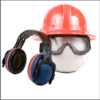Risk Assessment and Management
Risk assessment and management is essential for the success of any business. However, many companies do not always take the necessary precautions, which leads to disaster. Successfully managing risks will prevent mistakes, which leads to a safer work environment, happier employees, and increased productivity. Following a few basic steps will place your organization on the path to success.
Identifying Hazards and Risks
Every organization has both hazards and risks. Identifying hazards and risks is necessary for risk management. Hazards and risks are often confused with each other. Determining the difference between a hazard and a risk will increase the effectiveness of the risk management program.
What Is a Hazard?
A hazard is any source of harm. This includes adverse health effects or loss to the organization or employee. Hazards are varied. They include materials, substances, sources of energy, processes, practices, and conditions.
Examples of hazards:
- Sharp objects
- High temperatures
- Electricity
- Slippery surfaces
- Asbestos
- Chemicals
Once hazards are identified, you can take the opportunity to identify the risks associated with each hazard in your facility.
What Is a Risk?
A risk is not a hazard. It is the chance of harm coming from a hazard. This applies to the health, bodily safety, equipment, and property. For example, prolonged exposure to chemicals in the work environment increases the risk of health problems. Noise exposure can place an employee’s hearing at risk. Identifying the hazards in an environment is the first step in risk assessment. The second step is to determine who is at risk from these hazards. The third step is to evaluate the risk, and the final step is to determine the best way to control the risks and provide a safe working environment.
Course Objectives:
- Identify hazards and risks
- Update control measures
- Grasp the fundamentals of accident reports
- Identify risk management techniques
- Outline a disaster recovery plan
- Communicate to the organization










Reviews
There are no reviews yet.